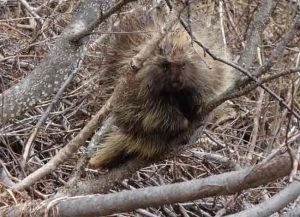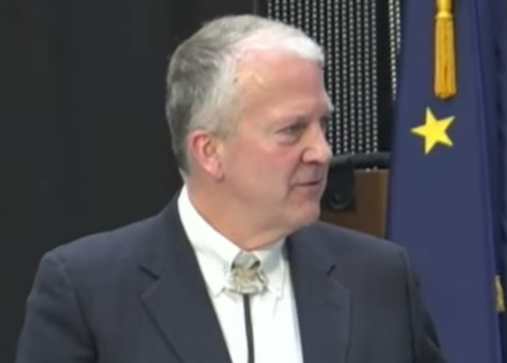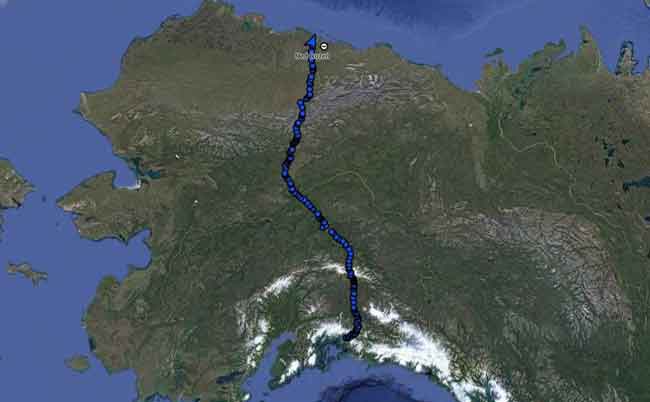
In the early going of my second hike across Alaska along the route of the Trans-Alaska pipeline, I chose to walk the highway rather than the pipe’s route to get up Thompson Pass north of Valdez. The road added six miles to our day. But I tried the pipe route up the pass 20 years ago and it was like trying to climb a 90-meter ski jump.
Most of my mileage so far on this trip has been on the shoulder of the Richardson Highway. The pipeline pad here in the mountains is still deep with punchy snow. You’d think a guy would have checked that out before starting.
The road, surprisingly, is quite pleasant. Cora doesn’t seem to mind being leashed. And only about 10 cars and trucks pass us each hour. Is Alaska becoming the land gone lonesome, with people headed down the Alaska Highway and moving out? I’ve seen a good number of U-Hauls. Or is it not Memorial Day yet?
If the people are still on their way in, the birds have beat them to the party. One, the Wilson’s snipe, forced me to stuff in earplugs while camping near Worthington Glacier.

On a crisp moonlit night, the snipes sliced through the mountain air with their winnowing call. It’s a bit spooky, like hysterical laughter that starts and ends soft but is loud in the middle. I’m pretty sure Cora never heard it before. She sat up a few times with pointy ears trying to figure it out. She gave up after a few hours.
A snipe makes that sound not with its throat but its tail. During breeding display swoops, the bird forces air through its outer tail feathers and generates sound. Anna’s hummingbirds generate a musical pop in the same fashion during their courting arcs through the air.
So what’s a shorebird like a snipe doing at the toe of a glacier, where most of the ground is covered in two feet of snow? These birds with beaks as long as pencils, some from as far south as Panama, are in the alpine to feed on the creatures living in the mud of the marshy areas up here and to have their babies. Summer is short.
Migrant birds are flooding into the high country of Alaska, and everywhere else in the state. Sitting here at an airstrip near Worthington Glacier, I hear the first three notes of the Sesame Street theme (“sun-ny day”). It’s the song of golden-crowned sparrows fresh up from the California coast. A fox sparrow that might have wintered in Pensacola, Florida, is doing his part to fill the soundscape, too.
The ptarmigan, cackling manically, must wonder what to make of all these visitors.
I’m all for them, even if they keep me awake. They are flooding the territory, and from the ground this country feels pretty big.
I’m happy to report a few successful encounters with one of the most dangerous animals we will encounter. Cora’s dog friend Freya returned to us early in the trip with a solitary porcupine quill protruding from her nose. We pulled it out with a set of hemostat pliers, but it took Chris, Ian and me holding her.
Since then, we’ve seen a few more porkys. They have Tina Turner hair of quills and seem as big as small bears.
Those hardy guys survived without hibernating all winter, clinging to spruce trees and eating their needles and bark, which are toxic to most other organisms. That is obvious when you crunch a needle that fell into your oatmeal.
So far, Cora has only barked at them and has come back when I called. Maybe she saw her buddy being wrestled and came to the conclusion that some things aren’t worth sticking your nose in.
Source: Geophysical Institute [xyz-ihs snippet=”Adsense-responsive”]








